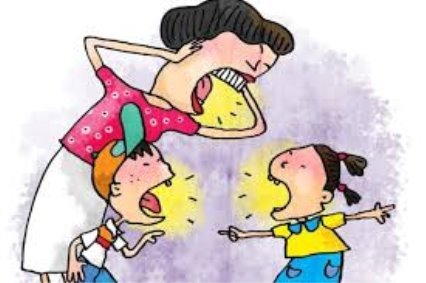Конспект уроку з англійської мови для 6го класу
У цьому документі представлений конспект уроку для шостих класів спеціалізованих шкіл на тему "Правила поведінки". Учням пропонуються різні варіації на тему того, що треба робити для захисту навколишнього середовища, а також подаються граматичні структури для висловлювання порад.
Lesson
Teacher A.Ovcharenko
Form: 6th
Topic: Dos and Don’ts.
Learning outcomes: By the end of the lesson students will be able:
- to talk about rules in everyday speech;
- to discuss environmental problems and present the solutions to them;
- to practise giving advice with certain patterns;
- to work in groups;
- to comprehend the recording text
Main social issues: Health and Safety
Environmental Safety and Sustainable Development
Equipment:
a laptop,
Enterprise 1 Coursebook,
hand-outs.
Procedure
I. Lead-in
A teacher greets the students and shows them two pictures depicting children following and breaking the rules. The students compare the pictures together and the teacher pays their attention to the rules. The students formulate the rules using the Imperative Mood.


S1: Be tolerant and friendly at the playground.
S2: Don’t shout at each other.
II. Listening
- Pre-listening task
The teacher introduces the key words and gives the definitions to them. The students make up the sentences with them.
Word list: pre-packaged food, to create, washing – up liquid, a factory, to light fires, to drop rubbish, to throw plastic bottles, aerosols.
S1: Don’t drop rubbish in the street.
S2: There is a lot of pre-packaged food in the supermarket.
- Listening task
The students listen to the recording of the leaflet with instructions how to help the environment. Enterprise 1 CB Ex.3 p. 99. After the first listening they are divided into two groups. The groups are responsible for dos and don’ts for the things we have to do to protect the environment. After the second listening the students present their ideas.
S1: Use public transport.
S2: Don’t use aerosols.
с) After-listening task
The students make up the dialogues in which they discuss the ways of protecting the environment. They give the instructions and the reasons for each of them.
S1: Use less washing-up liquid.
S2: Because it pollutes the seas and rivers.
III. Language development
The teacher drills new words with the students with the help of the filling in the gaps. CB Ex. 5 p.99. After that the students play a game “What’s this”. One of the students explains the topic word in English and others have to spy what it is.
S1: It means to make air or water dangerously dirty.
S2: Is it to pollute?
S1: Yes, you’re right.
IV. Grammar
The teacher introduces the students to the certain patterns that they can use to give advice.
Grammar structures:
- You should ….. .
- You shouldn’t ……. .
- Why don’t you….. ?
- I think it’s a good idea to ….. .
- I don’t think it’s a good idea to… .
The students discuss tips how to keep fit and healthy in groups using the patterns of giving advice. A teacher comes to each group and listens to their advice.
V. Summing – up
T: Today you’ve learnt how to give advice and use them in our everyday speech. Moreover, you’ve discussed the ways of helping our environment and consequences of our actions. You’ve done a good job at the lesson.
VI. Hometask
T: Write your friend a letter giving advice on how to keep fit and healthy.


про публікацію авторської розробки
Додати розробку
